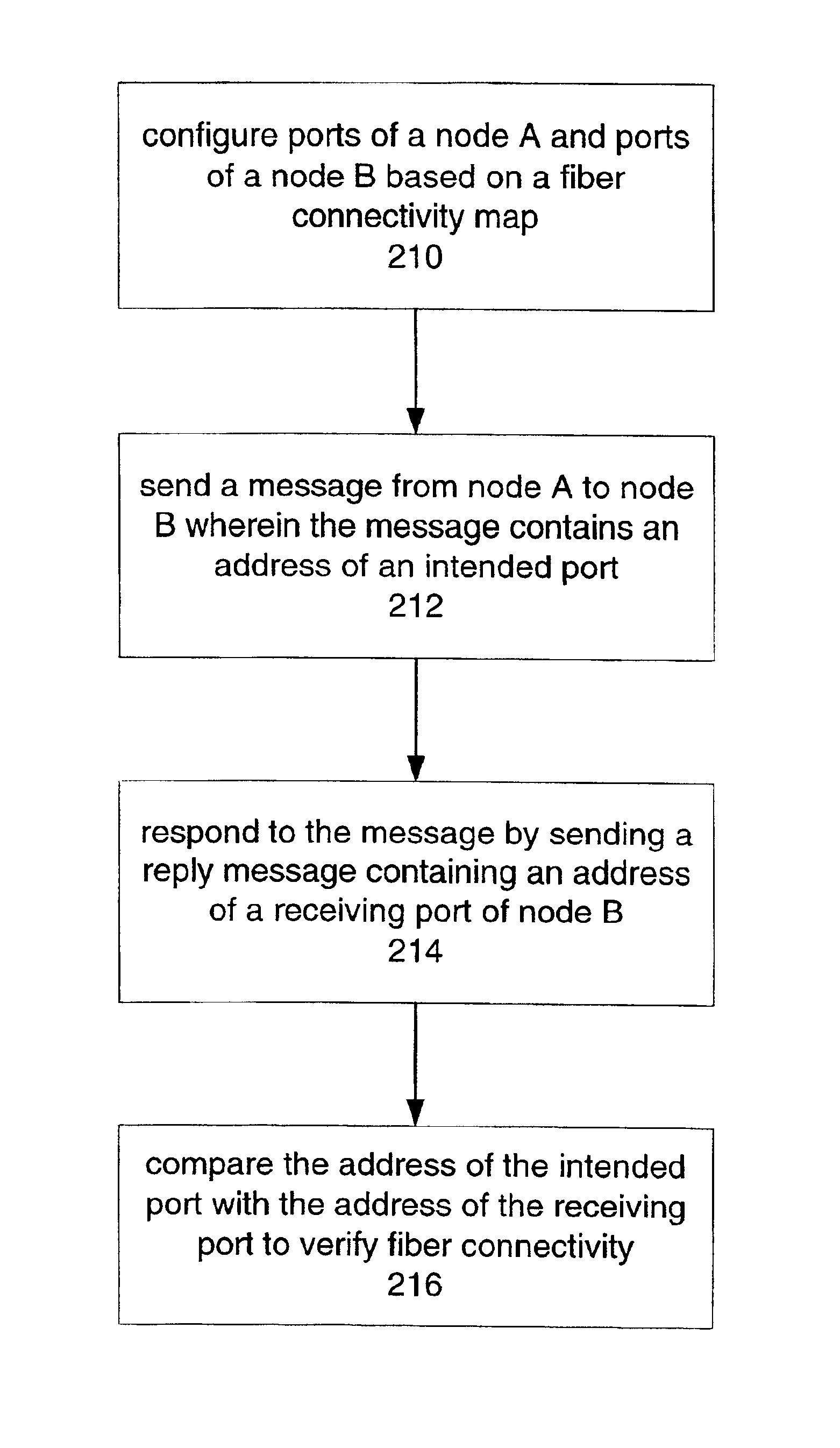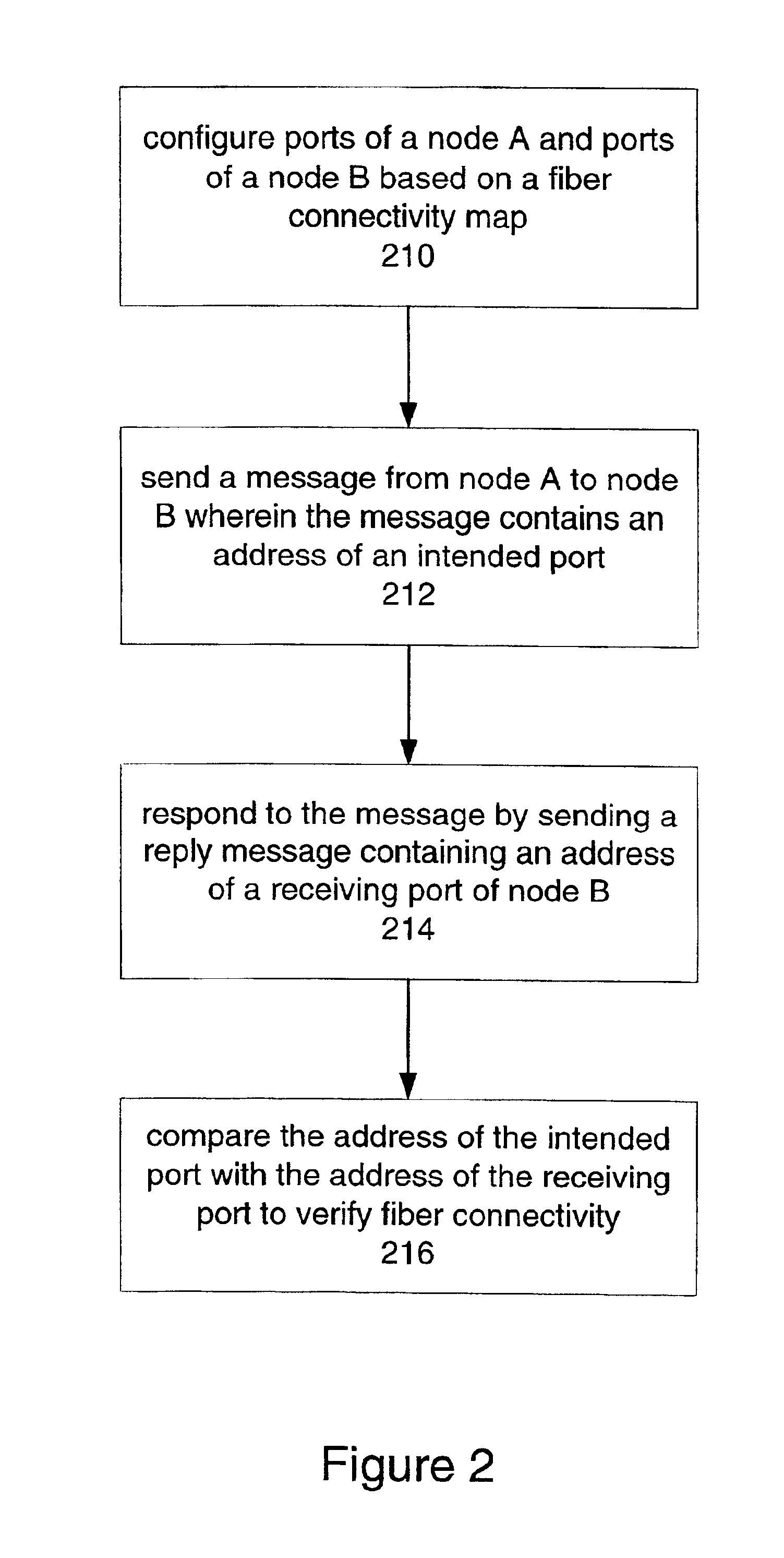Technique for verifying fiber connectivity in a photonic network
a technology of fiber connectivity and photonic network, which is applied in the direction of transmission monitoring, transmission monitoring/testing/fault measurement system, electrical equipment, etc., can solve the problems of laborious and time-consuming establishment of correct fiber connectivity, high labor intensity and labor-intensive photonic network commissioning,
- Summary
- Abstract
- Description
- Claims
- Application Information
AI Technical Summary
Benefits of technology
Problems solved by technology
Method used
Image
Examples
Embodiment Construction
)
[0024]The present invention provides a measurement and test technique that utilizes an embedded OSC of a photonic network where associated functions of the OSC in each node support a variety of measurement and test functions for dark fibers in a photonic network.
[0025]FIG. 1 is a photonic network 100 wherein fiber connectivity is verified in accordance with the present invention. The photonic network 100 comprises node 120, node 122, node 124 and node 126. At commissioning time, the nodes are interconnected with optical fibers, according to a specified plan. For example, port ‘a’ of node 120 is connected to port ‘1’ of node 122 to form an inter-nodal fiber link via optical fiber 140. Also, port ‘d’ of node 120 is connected to port 4 of node 122 to form an inter-nodal fiber link via optical fiber 128, which may be specified as a protection link. Fiber connections must be established as specified because the operation of the network is dependant on proper fiber connectivity. At commi...
PUM
 Login to View More
Login to View More Abstract
Description
Claims
Application Information
 Login to View More
Login to View More - R&D
- Intellectual Property
- Life Sciences
- Materials
- Tech Scout
- Unparalleled Data Quality
- Higher Quality Content
- 60% Fewer Hallucinations
Browse by: Latest US Patents, China's latest patents, Technical Efficacy Thesaurus, Application Domain, Technology Topic, Popular Technical Reports.
© 2025 PatSnap. All rights reserved.Legal|Privacy policy|Modern Slavery Act Transparency Statement|Sitemap|About US| Contact US: help@patsnap.com



